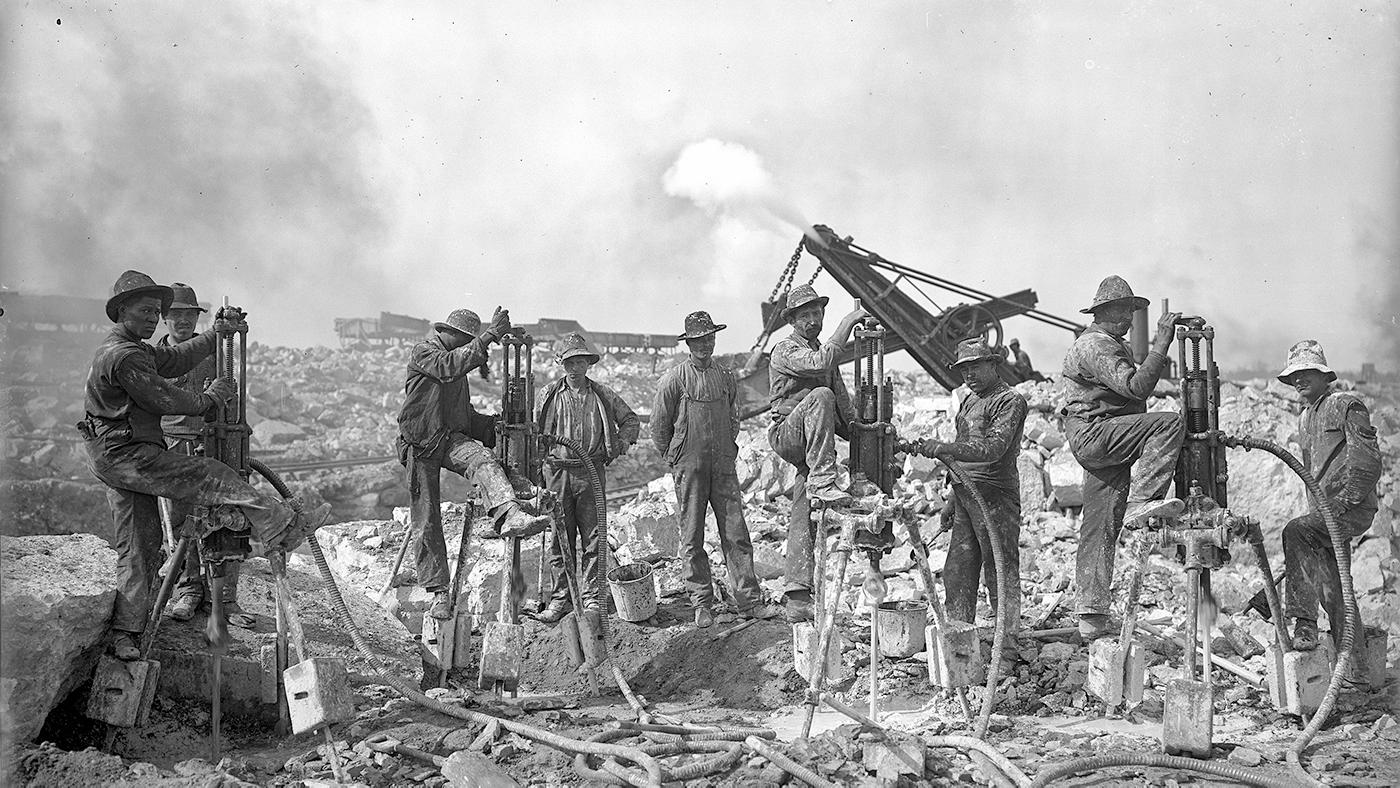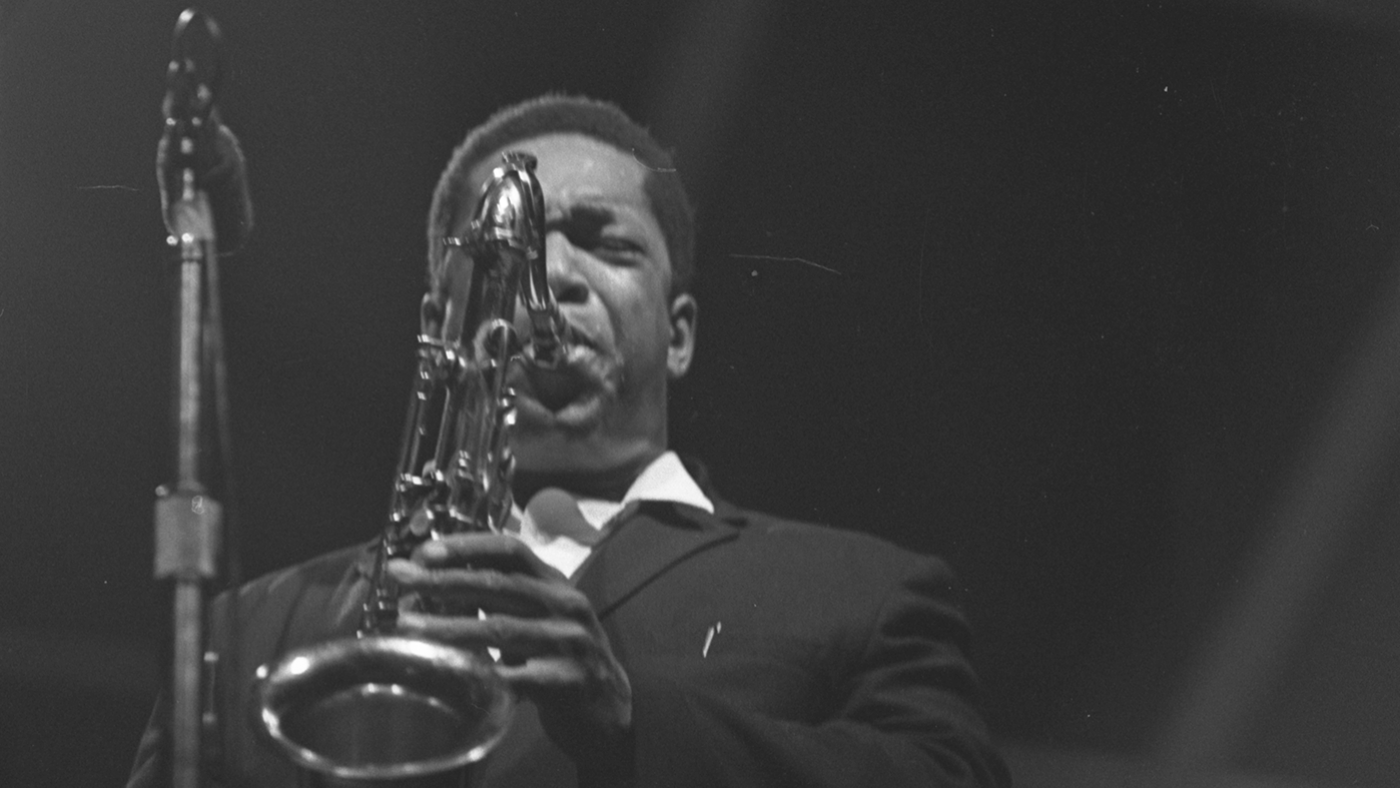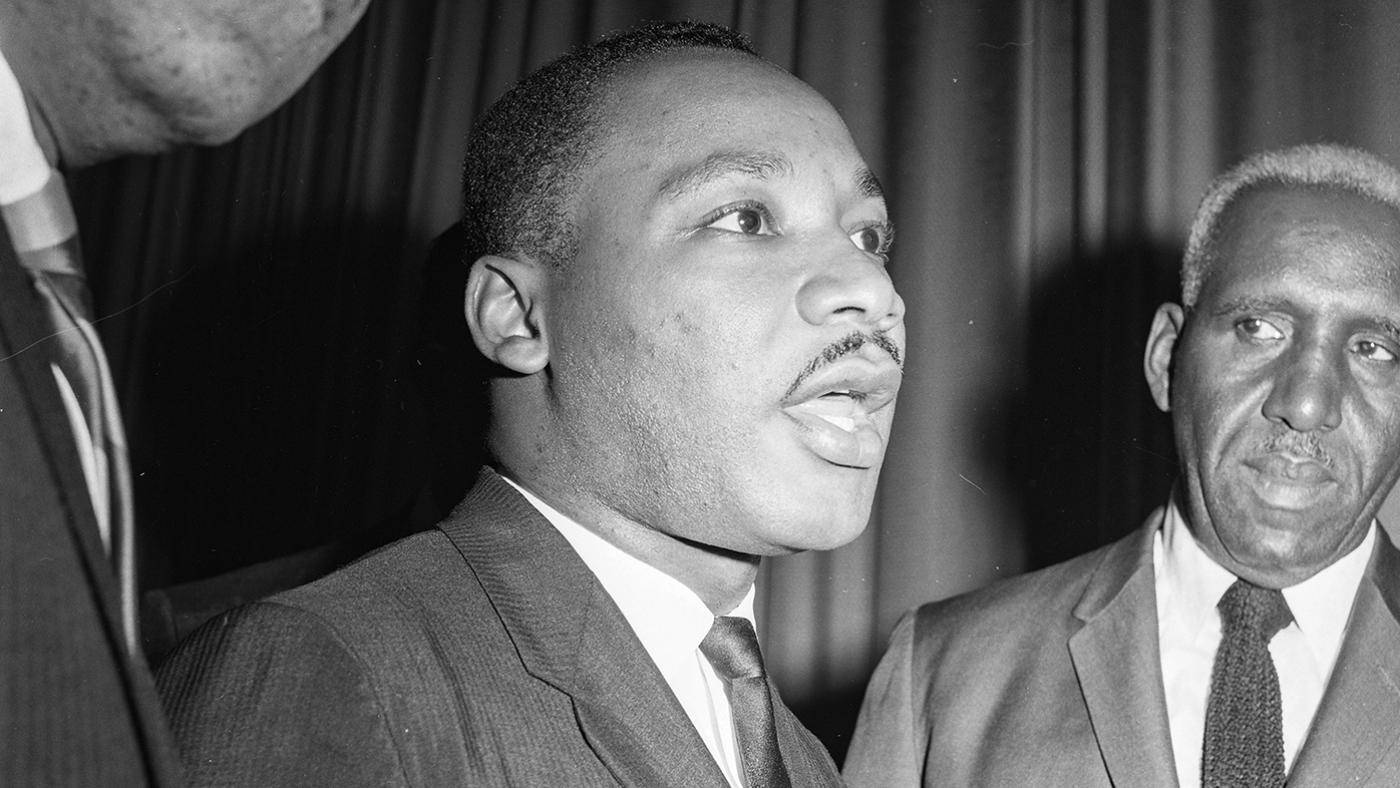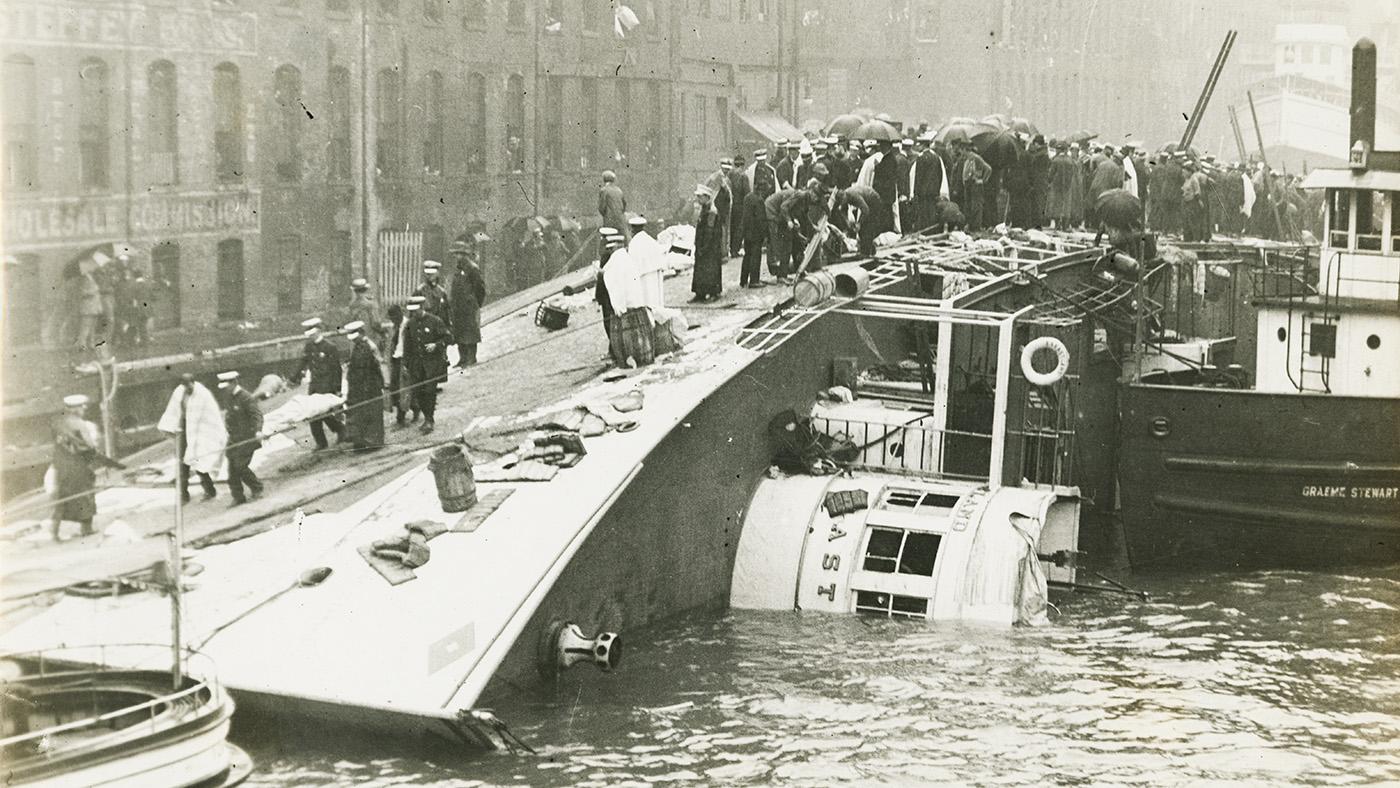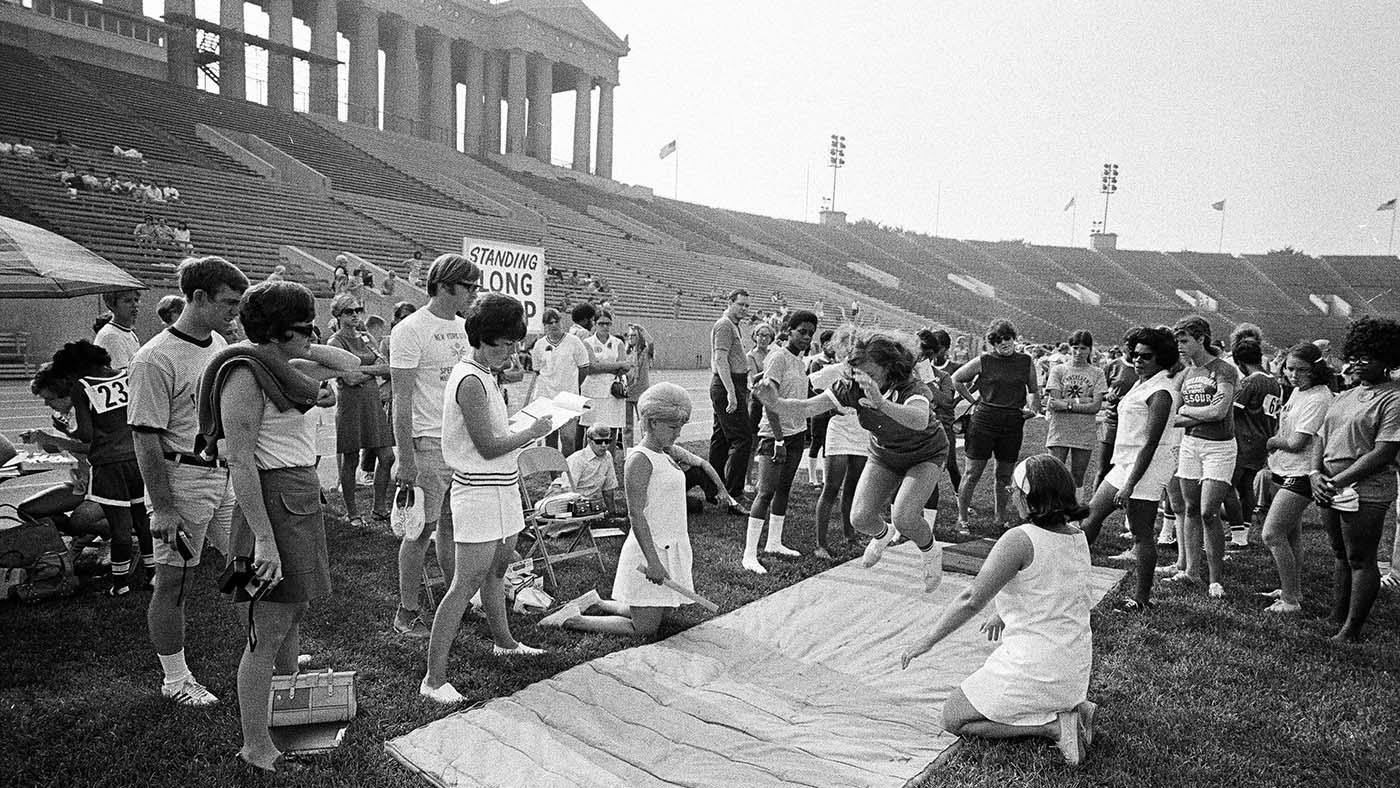Chicago's Unsung, Pioneering Women
Daniel Hautzinger
March 20, 2019
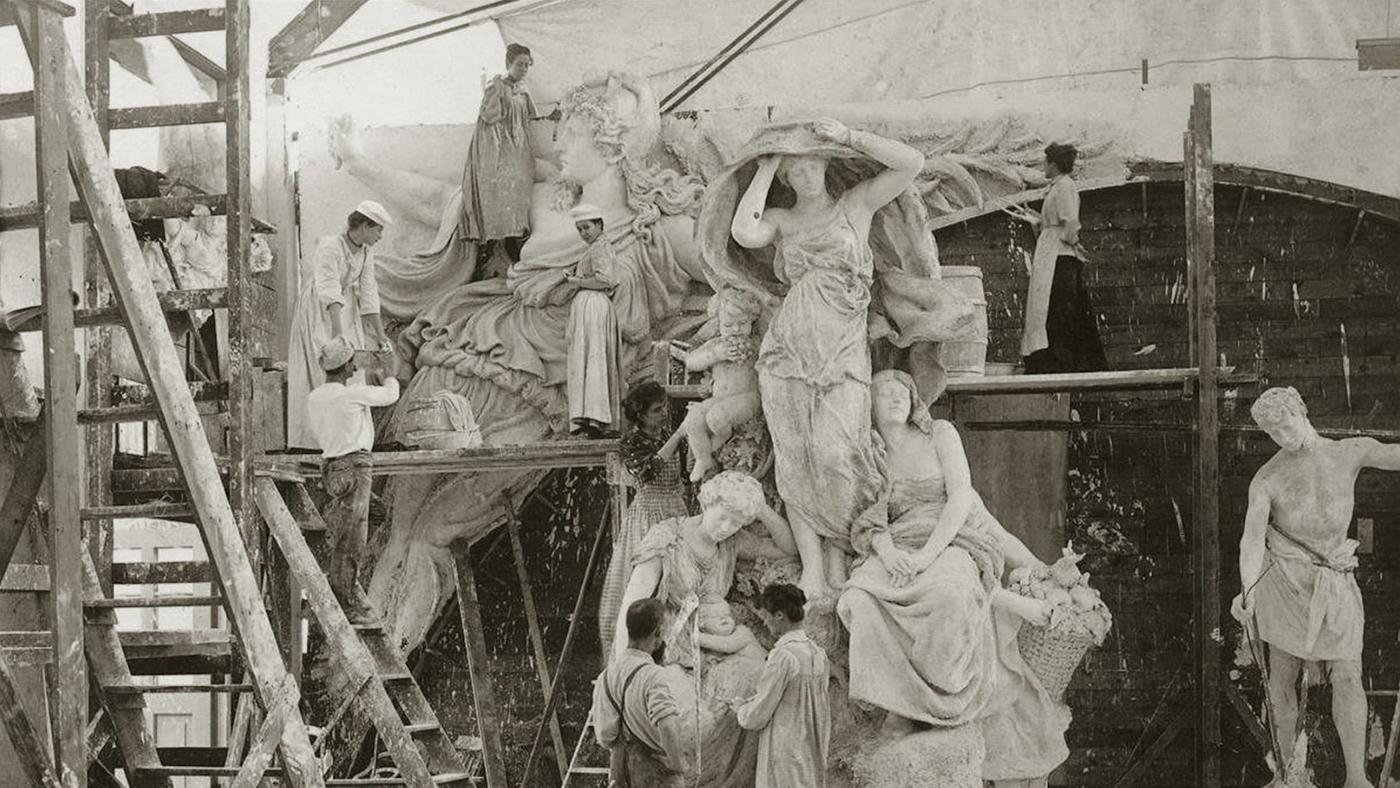
During Women’s History Month, it’s easy to remember the more prominent groundbreakers who have become famous, women like Jane Byrne, Bessie Coleman, and Ida B. Wells. (Although even iconic women such as these face a struggle to be honored: it took decades for Jane Byrne and about a century for Wells to be officially recognized with public places named after them, and, as WBEZ’s Curious City revealed in a list of Chicago women it thought deserved more recognition, there are approximately 40 figurative statues of men but only two of women in the city.) But there are plenty of other indomitable women who quietly broke barriers, built successful careers despite sexism, and strove on behalf of both their gender and their fellow-citizens. Without too much overlap with either WBEZ’s list or the female artists honored in Kerry James Marshall’s mural on the side of the Cultural Center, here are some unsung pioneers of Chicago and Illinois.
Kittahawa (or Kitihawa)
Kittahawa is the first known permanent settler of the area that became Chicago, along with her husband Jean Baptiste Point DuSable. The couple built up a successful trading post serving Native Americans, the French, and the British, aided by Kittahawa’s kinship relationships amongst her own Potawatomi people as well as other Native American groups.
White Rabbits
“White Rabbits” was the name given to a group of female sculptors who helped decorate the 1893 Columbian Exposition’s White City of monumental pavilions. After the Fair, several of them went on to successful careers: Enid Yandell became “Kentucky’s representative sculptor,” Bessie Potter Vonnoh crafted portraits of women and children, and Helen Farnsworth Mears received various public commissions, including a statue of another famed Chicago-area woman, the suffragist Frances E. Willard.
Hull House Residents
 Julia Lathrop was the first woman to head a federal agencyOne of Chicago’s most celebrated women (and the first American woman to win the Nobel Peace Prize) is the reformer Jane Addams, whose Hull House on the Near West Side produced many pioneering women in the late nineteenth and early twentieth century. Among some with strong ties to Chicago are the obstetrician/gynecologist Rachelle Yarros, who opened the second birth control clinic in the country in Chicago; Julia Lathrop, a labor activist and suffragist who was the first woman to head a federal agency (and the namesake of a public housing project in Chicago); and Sophonisba Breckenridge, who helped create the academic discipline of social work at the University of Chicago, after breaking barriers in academia, law, and diplomacy.
Julia Lathrop was the first woman to head a federal agencyOne of Chicago’s most celebrated women (and the first American woman to win the Nobel Peace Prize) is the reformer Jane Addams, whose Hull House on the Near West Side produced many pioneering women in the late nineteenth and early twentieth century. Among some with strong ties to Chicago are the obstetrician/gynecologist Rachelle Yarros, who opened the second birth control clinic in the country in Chicago; Julia Lathrop, a labor activist and suffragist who was the first woman to head a federal agency (and the namesake of a public housing project in Chicago); and Sophonisba Breckenridge, who helped create the academic discipline of social work at the University of Chicago, after breaking barriers in academia, law, and diplomacy.
Margaret Anderson
Anderson was a journalist who, along with her compatriot and sometime rival Harriet Monroe, helped shape modernism in America. Between Anderson’s decidedly uncompromising literary magazine The Little Review, founded in 1914, and Monroe’s Poetry magazine, founded in 1912, Chicago served as a hotbed of literary developments in the teens and twenties. Anderson published Europeans such as James Joyce, Ezra Pound, and T.S. Eliot, as well as Chicagoans like Ben Hecht, Sherwood Anderson, and Carl Sandburg. Monroe, a poet herself, published some of the same authors, as well as Wallace Stevens and William Carlos Williams. Poetry magazine lives on; The Little Review folded in 1929.
Georgiana Simpson
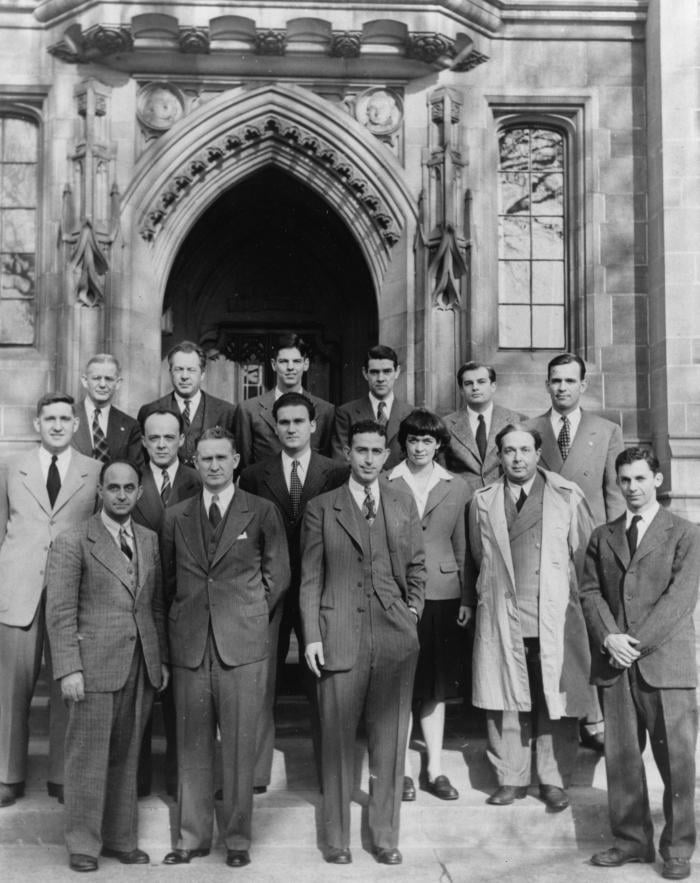 The team behind the first controlled, self-sustaining nuclear chain reaction. Libby is the only woman. Photo: Courtesy of University of ChicagoSimpson was the first African American – of either gender – to earn a PhD from the University of Chicago, and one of the first African American women in the country to attain that level of degree. She first enrolled in the University in 1907 and, despite support from Sophonisba Breckenridge, was forced to live off campus because of her race. She returned in 1917 to earn a doctorate in German Philology, and later became a professor at Howard University. She was recently honored with a bust at the University of Chicago.
The team behind the first controlled, self-sustaining nuclear chain reaction. Libby is the only woman. Photo: Courtesy of University of ChicagoSimpson was the first African American – of either gender – to earn a PhD from the University of Chicago, and one of the first African American women in the country to attain that level of degree. She first enrolled in the University in 1907 and, despite support from Sophonisba Breckenridge, was forced to live off campus because of her race. She returned in 1917 to earn a doctorate in German Philology, and later became a professor at Howard University. She was recently honored with a bust at the University of Chicago.
Leona Woods Marshall Libby
In a photo of the team who engineered the world’s first controlled, self-sustaining nuclear chain reaction at the University of Chicago in 1942, there is only one woman: Leona Woods Marshall Libby. Not only was she the lone woman, she was also one of the youngest scientists to work on the team, being only 23 at the time (she had received her Bachelor of Science from the University of Chicago at age 19). She continued to work with nuclear reactors, at one point wearing baggy clothing to hide her pregnancy so that she could keep working, and was a prolific researcher and publisher.
Barbara Proctor
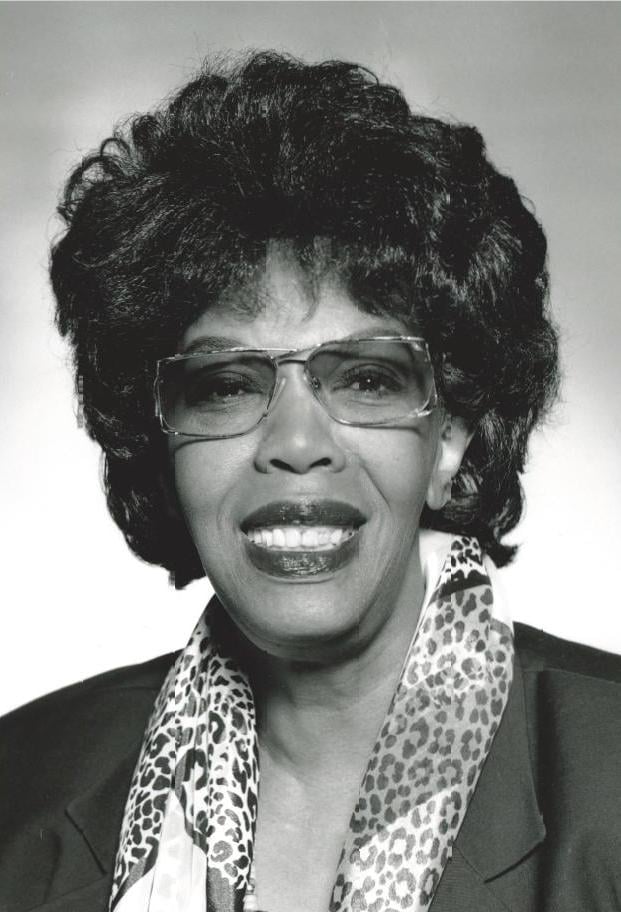 Barbara Proctor was the first African American woman to own and manage an ad agencyProctor started Proctor and Gardner Advertising in 1970, making her the first African American woman to own and manage an ad agency. It eventually became the second largest African American ad agency in the country, earning Proctor a place in a set of “Supersisters” trading cards of influential women in 1979 and a mention by President Ronald Reagan in his 1984 State of the Union address. Earlier in life, while working for Vee-Jay Records in the early 1960s, she brought some of the first singles by the Beatles to the United States. She worked for the advancement of African Americans and women, and sat on various boards, including WTTW’s parent company, WWCI. She died in January of this year.
Barbara Proctor was the first African American woman to own and manage an ad agencyProctor started Proctor and Gardner Advertising in 1970, making her the first African American woman to own and manage an ad agency. It eventually became the second largest African American ad agency in the country, earning Proctor a place in a set of “Supersisters” trading cards of influential women in 1979 and a mention by President Ronald Reagan in his 1984 State of the Union address. Earlier in life, while working for Vee-Jay Records in the early 1960s, she brought some of the first singles by the Beatles to the United States. She worked for the advancement of African Americans and women, and sat on various boards, including WTTW’s parent company, WWCI. She died in January of this year.
Hazel Johnson
Johnson is sometimes called the “mother of the environmental justice movement,” for her foresight of how pollution and industrial landscapes would disproportionately blight poor and black and brown communities. She saw firsthand the effects of industrial pollution on her own neighborhood of Altgeld Gardens on the South Side near Lake Calumet – the Southeast Side of the city had the highest incidence of cancer of any area in Chicago. Johnson diligently strove to understand environmental issues, pressured governments and corporations to address industrial pollution, and helped push President Bill Clinton to sign an Environmental Justice Executive Order in 1994. She died in 2011.
Teresa Fraga
Fraga has lived in Pilsen since 1966, and has been an activist and community organizer on behalf of the neighborhood for almost five decades. A Mexican immigrant who worked on Texas farms before coming to Chicago with her family, Fraga has long been involved with the Pilsen Neighbors Community Council and local school boards, helping bring a high school to the neighborhood in the 1970s. She also co-founded the Eighteenth Street Development Corporation, which supports local businesses in Pilsen, and sits on the board of Pilsen’s Alivio Medical Center. You can see her and her family in both WTTW’s 1981 documentary about Pilsen, Port of Entry, and our 2017 documentary about the neighborhood, My Neighborhood.
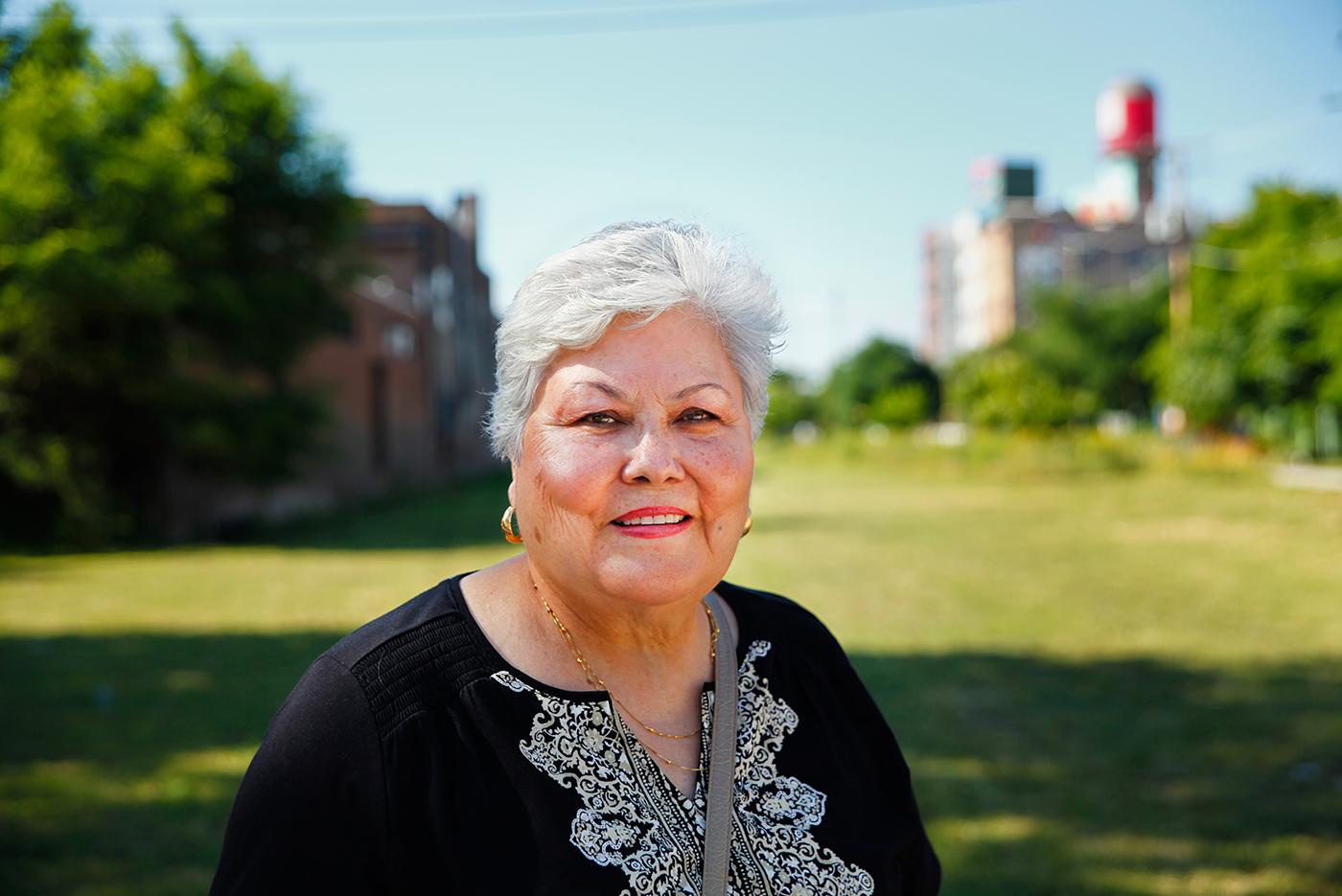 Teresa Fraga has lived in Pilsen since 1966, and has been an activist and community organizer for the neighborhood for almost five decades
Teresa Fraga has lived in Pilsen since 1966, and has been an activist and community organizer for the neighborhood for almost five decades
Sue Ling Gin
After Gin’s immigrant father died when she was 10, she had to handle negotiations with the landlord and the utilities in the suburb of Aurora for her mother, who didn’t speak English. When she was 18, with money from odd jobs, she and her brother bought a condemned house and turned it into apartments. She eventually started a real estate firm staffed only by women – because they would work for less than men, she said – then began buying and renovating buildings, and started two restaurants. She was a pioneering investor who helped transform the warehouses of the West Loop into the now hot Randolph Row. And she started the multimillion-dollar Flying Food Group, which supplies more than 70 airlines with food, as well as retail outlets, making her one Chicago’s most powerful businesswomen until her death in 2014.
Laura Liu
Liu holds the dubious distinction of being one of only two women honored with a figurative statue in the city (the other is of Gwendolyn Brooks), which stands along the river in Chinatown’s Ping Tom Memorial Park. In her short life, Liu worked as an attorney, became the first Chinese-American judge in Illinois, and the first Asian American on Illinois Appellate Court. She also worked to make the court system more accessible for non-native speakers – Liu herself was barely able to speak English when she started school. She follows in the footsteps of Mary Bartelme, Illinois’s first female judge and one of Chicago’s first female lawyers, and Myra Bradwell, who was refused entry to the bar on account of her gender by the Illinois Supreme Court, a decision upheld by the U.S. Supreme Court.

